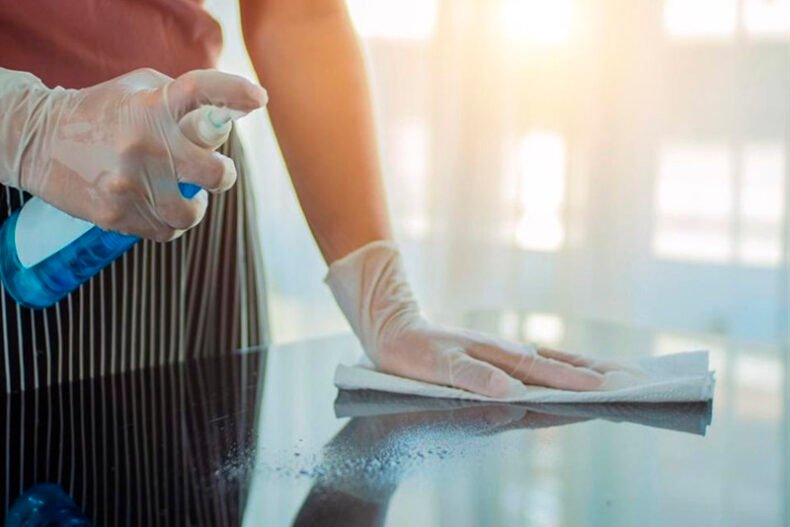Nanomaterial-based Antimicrobial Coating Strategies
Previously, coatings were applied in industrial settings to prevent corrosion, but things have changed with nanoscience advancement. Nanocomposite-based coatings are used in a wide array of applications; some of the different types of nano-based antimicrobial coatings are discussed below.
Self-Disinfecting Surfaces
Oxidative stress, metal ion release, and non-oxidative mechanisms are the most common method of antimicrobial action, with literature widely documenting self-disinfecting surfaces containing titanium dioxide, silver, or copper, or zinc nanoparticles. Nanoparticles can generate reactive oxygen species, such as superoxide (O2−) or hydroxyl radical (OH), which can penetrate the bacterial membrane and cause cell death.
Copper oxide nanoparticles can interact with functional groups of proteins and bring about an alteration of the normal physiological processes inside bacterial cells. Nanoparticles have a mechanism of action different from antibiotics and have a controlled time-release. These properties, coupled with the functionalization of nanoparticles with other biomolecules, ensure their success in combatting infectious agents.
Silver-based nanoparticles have been used for decades but are expensive and not durable. Besides silver, copper, titanium, gold, and iron nanoparticles have shown bactericidal effects as they interact with the functional groups of proteins and nucleic acids, amino groups. Furthermore, those with active surfaces have one important limitation: they may release active compounds toxic to the surrounding eukaryotic cells.
Contact-Killing Surfaces
Contact-killing surfaces have an active compound secured to the coating, which directly interacts with a bacterial cell. The compound may become active after coming in contact with bacteria or after activation by light. Quaternary ammonium compounds (QACs) and N-chloramines are the two most studied biocides.
In the case of QACs, the positively charged nitrogen interacts with the negative charge of the phospholipids in the bacterial membrane, disrupting cells. N-chloramines, formed by the chlorination of amine, amide, or imide groups, contain one or multidrug-resistant N-Cl bonds in which chlorine is partially positively charged. These nanoparticles function through an active chlorine transfer from a surface to the external protein matrix of bacteria.
n addition to the above two, polymers and polysaccharide chitosan are also used as nanocoatings, which damage the cell membrane and cause cell apoptosis. Antimicrobial peptides have also been successfully used for their broad-spectrum antimicrobial activities.
Anti-adhesive surfaces
Anti-adhesive surfaces aim to repel microbes. During the initial stage of the biofilm formation process, features such as chemical composition and hydrophilicity are modified to lower bacterial adhesion. Recent research has shown that some nanoparticles, such as those from gold, zinc, and copper, are capable of hindering biofilm formation by interacting with the extracellular matrix and bacterial communication.
Common Applications of Nano-based Coatings
The COVID-19 pandemic has triggered an increase in hygiene and cleanliness practices.
Many brands have started innovating rapidly to provide their customers with hygienic experiences. Adhespack, a company with over two decades of experience in sampling technologies, is at the forefront of these innovations. The company has developed new fragrance labels and cards that contain a nanotechnology varnish.
It has been proven that the varnish has antibacterial and antiviral (including coronavirus) properties. Pre-pandemic, Adhespack launched the Ticket Scent, a novel modification of the ticket dispensers used for queues, adapted for perfume samples. It is now the first company in the world to offer sampling solutions with antibacterial and antiviral features.
The hand-surface-hand viral transfer route has always been taken seriously in healthcare. While existing infection prevention measures have successfully reduced the number of infections, more can be achieved by using new technologies in surface protection.


